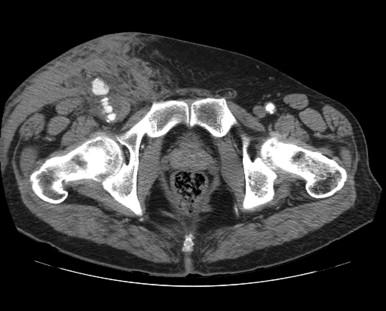Physical Address
304 North Cardinal St.
Dorchester Center, MA 02124
Although there is appeal in the less invasive nature of percutaneous procedures, access-related complications can be a source of significant morbidity and even mortality. Bleeding, arterial injury, ischemia, and nerve injury are common problems encountered in an environment where high volumes of percutaneous procedures are performed.
Risk factors for complications associated with lower extremity arterial punctures include increasing sheath size, increasing age, cannulation of arteries other than the common femoral artery, increasing body mass index (BMI), female gender, post-procedure anticoagulation, and combined arterial and venous puncture. Measures taken to minimize access-related problems include using the smallest sheath possible, locating the puncture over the femoral head with fluoroscopy, and employing ultrasound guidance to ensure puncture of the common femoral artery.
Bleeding after arterial puncture can be external, can form a localized hematoma, or can extend into the thigh or the retroperitoneal space ( Figure 1 ). External bleeding can initially be controlled with direct pressure using one or two fingers over the arterial puncture site. The temptation to place a sandbag or large dressing over the entire groin should be resisted because this results in nonspecific compression of the artery and interferes with visualization of the groin. If a large hematoma develops after initial hemostasis, surgical intervention should be considered if the hematoma continues to expand or if the overlying skin becomes ischemic as a result of pressure from the underlying hematoma. Even when bleeding has stopped, a hematoma can accumulate more volume as the clot lyses and extracellular fluid is absorbed. It is preferable to have drained a hematoma unnecessarily than to have to deal with the morbidity of extensive groin skin necrosis.

Bleeding puncture sites can be approached directly through a standard longitudinal groin incision. An alternative in obese patients is a transverse suprainguinal incision, which facilitates better skin healing and is more than adequate exposure for a simple repair or thromboembolectomy. Repairs can be carried out using local anesthesia. However, in the presence of a large hematoma, it may be difficult to obtain adequate pain control, and general or regional anesthesia provides a more controlled setting for an exploration. It is often easiest to approach the puncture site directly and use finger pressure initially for control. An appropriately sized metal dilator may be placed into the puncture site for control while a repair suture is placed. This technique allows repair of the puncture site with minimal dissection of the artery. Usually one or two transversely placed repair stitches are sufficient. It is important to make sure that one has actually dissected to the level of the artery and is not just repairing an opening superficial to the artery in an overlying tissue plane. The minimal dissection technique can also result in missed secondary punctures or back-wall bleeding sites from a catheterization employing the double-wall puncture technique.
A more conservative technique involves an initial dissection cephalad to obtain proximal control. Classic vascular teaching would even include a suprainguinal retroperitoneal incision to obtain control of the external iliac artery, although in our experience, this is rarely required. It is preferable to use a balloon catheter directed from a distal site or the puncture site itself for proximal control. Obtaining proximal and distal control allows complete dissection of the artery at the site of the puncture and identification of any additional puncture site complications.
Retroperitoneal hematomas usually result from punctures of the external iliac artery above the level of the inguinal ligament. The retroperitoneal areolar tissue is much less dense than that of the thigh and is less likely to tamponade major hemorrhage. The severity of this complication ranges from a self-limited process to an unstable patient who might need an emergent operation to stop the bleeding and repair the artery. If unrecognized, this is a potentially lethal complication. Retroperitoneal hematoma should be considered in a patient who has unexplained hypotension or a drop in hematocrit after an arterial puncture. The hematoma may be associated with back or lower abdominal pain, but significant hemorrhage can occur without localizing symptoms. Computed tomography or ultrasound examination can confirm the diagnosis. The puncture site can often be repaired from a groin approach by incising or mobilizing the inguinal ligament, with proximal control achieved with a balloon catheter. If available, fluoroscopy can be very useful for angiography-directed placement of a proximal balloon catheter or even repair of the puncture site with a stent graft.
Become a Clinical Tree membership for Full access and enjoy Unlimited articles
If you are a member. Log in here